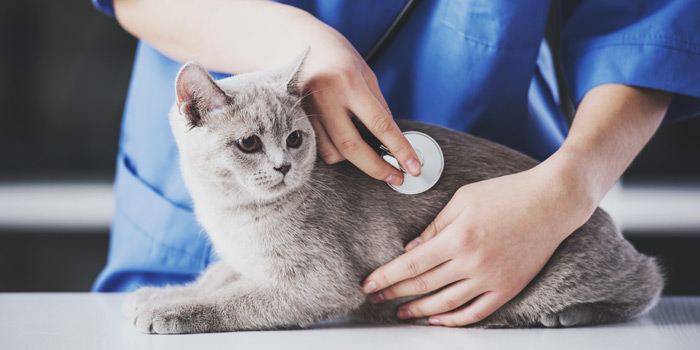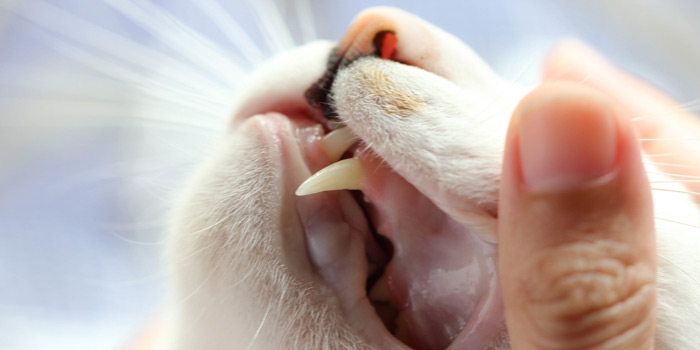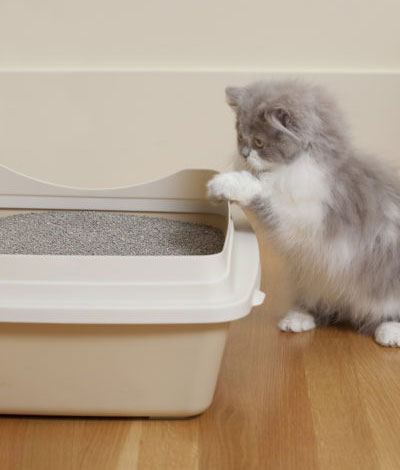
When you are deciding on litter boxes for your cat, think about location, size, type of litter, litter box management, and the number of litter boxes needed for your household. Here are some tips for designing the optimal litter box for your kitty:
How Many Litter Boxes Should I Have?
The general rule of thumb is to have one litter box for each cat, plus one additional extra box. So, you would need 3 boxes if there are 2 cats in your home.
Where Should I Put the Litter Box?
Look at the floor plan of your home to figure out the best place for the litter box. Cats usually prefer quiet, private places when they need to eliminate. Avoid busy areas of the home and locations where your cat could be cornered in, blocked off, or unable to flee. Also avoid placing food and water close to the litter box.
Place litter boxes in multiple locations that are out of view from other litter boxes and are easily accessible. Cats view litter boxes that are close to each other as one large litter box. In multi-cat households, having litter boxes in separate locations also allows a more timid cat can get to a litter box without passing by or getting blocked by a bully cat.
If your cat is toileting away from the litter box, place an additional litter box at a new site (temporarily or permanently) to get your cat to use a box again.
In a multi-level home, place a litter box on each level. If you have an older cat, place a litter box on the level where they spend the most time, as it may not be easy for them to go up and down stairs each time they need to use the box.
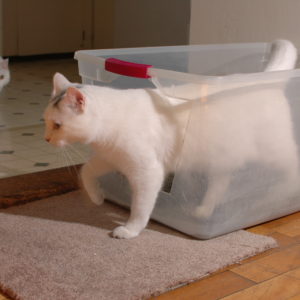
How Big Should the Litter Box Be?
In general, bigger is better and many litter boxes are too small. Litter boxes should be 1 ½ times the length of your cat from the nose to the base of the tail. The litter box needs to be large enough to allow your cat to enter, turn around, scratch, and eliminate. Suitable alternatives to a store bought litter box can include concrete mixing trays or storage containers. For older cats that need a low entry, you can cut down the side, but please remember to check for any sharp edges.
Many cats do not like box liners or covers, but a shy cat may prefer a covered box.
What Type of Litter Should I Use?
Soft, unscented clumping litters are preferred by most cats and these litters are easier for caregivers to clean. Many litters contain perfumed crystals or other scents which can cause asthma in cats – and in people! Others, such as cedar or pine, can have a scent that also bothers human and feline asthmatics. Aromatic or dusty litters, litter deodorizers, and box liners are also unpopular with many cats. Many cats prefer sand or soil litter which is similar to what they would use in the wild. Avoid litters with sharp or very hard consistency for older cats or those with sensitive paws.
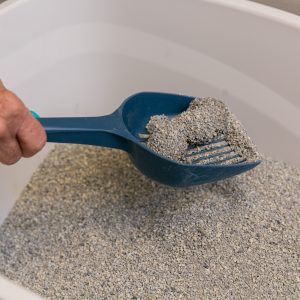
Did you know that cat litter was not developed until 1947?
Before that time, cats always eliminated outdoors in either sand or dirt. Since then many cat litters have been developed and marketed to humans, primarily answering the desires of humans.
How Should I Maintain the Litter Box?
The litter box needs to be maintained daily which includes removing any waste a minimum of once per day and adding litter as needed. Wash the litter box every 1-4 weeks using soap and hot water only. Avoid using strong chemicals or any ammonia-based products. A box with non-clumping litter should be changed completely every week.
Contributed by Dr. Ilona Rodan, DVM, DABVP (Feline)




